Simons Investigators
- Email:
[email protected]
Simons Investigators are outstanding theoretical scientists who receive a stable base of research support from the foundation, enabling them to undertake the long-term study of fundamental questions.
The Investigator program has been discontinued.
Simons Investigators in Mathematics, Physics, Astrophysics and Computer Science
The intent of the Simons Investigators in Mathematics, Physics, Astrophysics and Computer Science programs is to support outstanding theoretical scientists in their most productive years, when they are establishing creative new research directions, providing leadership to the field and effectively mentoring junior scientists. A Simons Investigator is appointed for an initial period of five years. Renewal for an additional five years is contingent upon the evaluation of scientific impact of the Investigator.
Simons Investigators in Mathematical Modeling of Living Systems (MMLS)
This program aims to help the research careers of outstanding scientists working on mathematical and theoretical approaches to topics in the life sciences. A Simons Investigator in MMLS is appointed for five years.
Math+X Investigators
This program encourages novel collaborations between mathematics and other fields in science or engineering by providing funds to professors to establish programs at the interface between mathematics and other fields of science or engineering. A Math+X Investigator is appointed for an initial period of five years. Renewal for an additional five years is contingent upon the evaluation of scientific impact of the Investigator.
- Email:
[email protected]
- Email:
[email protected]
2021
Guido De Philippis, Ph.D.
New York University
Guido De Philippis works in geometric measure theory, calculus of variations and partial differential equations. His main interest is the understanding of regularity (or lack thereof) of solutions of geometric variational problems, ranging from minimal surfaces to free boundary problems. Recently, in collaboration with Filip Rindler, he obtained a fine description of the structure of the singular part of measures satisfying a linear partial differential equation (PDE) constraint. By suitably choosing the PDE constriction, the result allowed a number of open questions to be solved: extension of Alberti’s rank-one theorem to the space of bounded deformation (BD) functions, converse of the Rademacher theorem and structure of Lipschitz differentiability spaces.
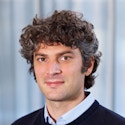
June Huh, Ph.D.
Stanford University
June Huh studies discrete objects using geometric methods. An unexpected relation between combinatorics and algebraic geometry found by Huh was used in his proof of Read's conjecture in graph theory. In recent works, he and his collaborators proposed a more general framework that tightens the connection between the two seemingly disparate fields. This led to proofs of several other long-standing problems in combinatorics, such as the ultra-log-concavity conjecture of Mason and the top-heavy conjecture of Dowling–Wilson.
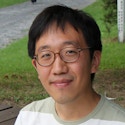
Lin Lin, Ph.D.
University of California, Berkeley
Lin Lin is an applied mathematician working in electronic structure theory. With collaborators, he has developed efficient, accurate and scalable algorithms in Kohn–Sham density functional theory, localization theory, many-body perturbation theory and quantum embedding theory. Several new methods have been adopted by electronic structure software packages widely used in quantum chemistry, quantum physics and materials science. Recently, Lin has contributed to neural network-based methods for accelerating molecular simulations, as well as quantum algorithms for solving high-dimensional linear algebra problems with applications to electronic structure calculations.

Assaf Naor, Ph.D.
Princeton University
Assaf Naor’s research focuses on analysis and geometry in high dimensions, with emphasis on understanding the structure of metric spaces, including the extent to which they can be realized in “nicer” geometries. He harnesses such insights for a variety of applications in several areas of pure mathematics (analysis, geometry, probability, combinatorics, group theory), and also in order to chart the possibilities and limitations of algorithms. Much of Naor’s work makes progress on the long-standing Ribe program, which is a web of conjectures and analogies between linear and nonlinear geometries that is inspired by a classical rigidity theorem of Ribe.
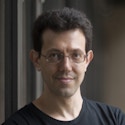
Xie Chen, Ph.D.
California Institute of Technology
Xie Chen studies exotic topological phenomena that can emerge in strongly interacting quantum many-body systems. Her work uses ideas and tools in quantum information to explore topological states of matter and study the relationships between them. She discovered and systematically constructed symmetry-protected topological phases in strongly interacting systems in two and higher dimensions. She proposed methods to classify and detect anomalies in symmetry-enriched topological phases. Recently, Chen’s work on fracton phases generalized the notion of phase and universality to properly capture the unusual “beyond topology” phenomena discovered in certain quantum error-correction codes.

Shanhui Fan, Ph.D.
Stanford University
Shanhui Fan works broadly on photonics theory. Fan has made fundamental contributions in temporal coupled mode theory, non-reciprocity as induced by dynamic modulation, photonic gauge potentials, waveguide quantum electrodynamics, solar cell light trapping theory and daytime radiative cooling. Recently, he has been working on concepts of synthetic dimensions as a way to explore Hermitian and non-Hermitian topological physics in photonics.

Peter Graham, Ph.D.
Stanford University
Peter Graham is interested in the fundamental laws of nature. Motivated by long-standing mysteries in particle physics and cosmology such as the weakness of gravity and the nature of dark matter, he proposed several new theories for these open questions. Additionally, he helped pioneer the use of ultrahigh-precision technologies for experimentally probing these questions. With experimental colleagues, he proposed novel approaches for detecting dark matter, new forces and gravitational waves. This gave rise to experiments using techniques from atomic physics, nuclear magnetic resonance and quantum information which are poised to shed new light on our universe.

Surjeet Rajendran, Ph.D.
Johns Hopkins University
Surjeet Rajendran has invented new experimental methods to detect gravitational waves, dark matter and dark energy. These methods are being implemented by many laboratories around the world. He has also developed theoretical tools to solve outstanding problems of particle physics such as the hierarchy and vacuum energy problems via cosmological evolution. His recent theoretical interests have been in identifying novel gravitational phenomena within general relativity, permitting new experimentally testable approaches to resolving cosmological singularities and solutions to the black hole information problem.
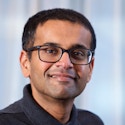
L. Mahadevan, Ph.D.
Harvard University
L. Mahadevan is a professor of applied mathematics, physics, and organismic and evolutionary biology. His work attempts to understand motion and matter at the observable scale of “middle earth” by integrating experiments, theory and computation. Areas of interest include the patterns of shape and flow of inanimate matter and the dynamics of sentient living matter that can self-organize, perceive and act. His publications range over subjects such as the geometry and physics of soft materials, the mathematics of origami and kirigami, the morphodynamics of cells and organs, and the ethology of collective behavior. Mahadevan is a MacArthur Fellow and a Fellow of the Royal Society.

Ilya Nemenman, Ph.D.
Emory University
Ilya Nemenman, in close collaboration with experimentalists, works on theoretical understanding of biological information processing, aiming to build models that show physics-level precision in agreeing with experimental data. He and his collaborators were some of the first groups to estimate information-theoretic channel capacity of protein signaling pathways, analyze statistical properties of activity of large genetic and neural networks, discover collective cellular sensing in development, decode high-precision timing codes in neural motor control, and model dynamics of complex animal behavior, such as a bird learning its song.
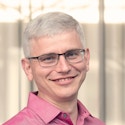
Jonathan Fortney, Ph.D.
University of California, Santa Cruz
Jonathan Fortney models many aspects of the physics of planets, from rocky worlds to gas giants. His work in planetary theory focuses both on exoplanets that orbit distant stars as well as planets in the solar system. His models have provided a framework to understand the atmospheres of exoplanets, their interior structure and thermal evolution, as well as physical processes like helium “rain” deep within Saturn. Fortney often works closely with observers to interpret spectra of exoplanets to better understand their physics, chemistry and clues to their formation.

Yuri Levin, Ph.D.
Columbia University
Yuri Levin works on astrophysics of neutron stars, black holes and gravitational waves. He is known for computations of thermal and quantum noise in LIGO interferometers, for co-discovering a disc of massive stars orbiting the supermassive black hole at the center of the Milky Way, for developing gravitational-wave search algorithms for pulsar timing arrays, and for his work on the dynamics of magnetized neutron stars. Levin is currently attempting to understand the architecture of stellar clusters near supermassive black holes and figure out the origin of pulsar glitches.

Maria-Florina Balcan, Ph.D.
Carnegie Mellon University
Maria-Florina Balcan’s research spans machine learning, algorithms and algorithmic game theory. She introduced general techniques that helped put modern machine-learning paradigms on solid theoretical foundations, including learning from limited labeled data, distributed learning, noise-tolerant learning and life-long learning. She also provided fundamental contributions to the area of analysis of algorithms beyond the worst-case, by providing both new models of realistic (non worst-case) instances and general techniques for designing and analyzing algorithms derived in a data driven fashion.
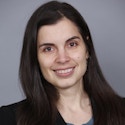
Amit Sahai, Ph.D.
University of California, Los Angeles
Amit Sahai’s research proposes fundamental new concepts in cryptography and establishes new feasibility results. He is best known for his works proposing the notions of indistinguishability obfuscation and functional encryption, and for his recent work establishing the feasibility of indistinguishability obfuscation and functional encryption for general computations based on well-studied hardness conjectures.
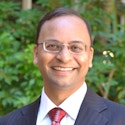
Thomas Vidick, Ph.D.
California Institute of Technology
Thomas Vidick’s research is at the interface of theoretical computer science, quantum information and cryptography. He is known for his work in the theory of quantum interactive proofs, including results on device-independent cryptography, certified randomness and the complexity of quantum multiprover interactive proof systems. The study of quantum entanglement provides a unifying goal behind all these areas and a focal point for his current research.
